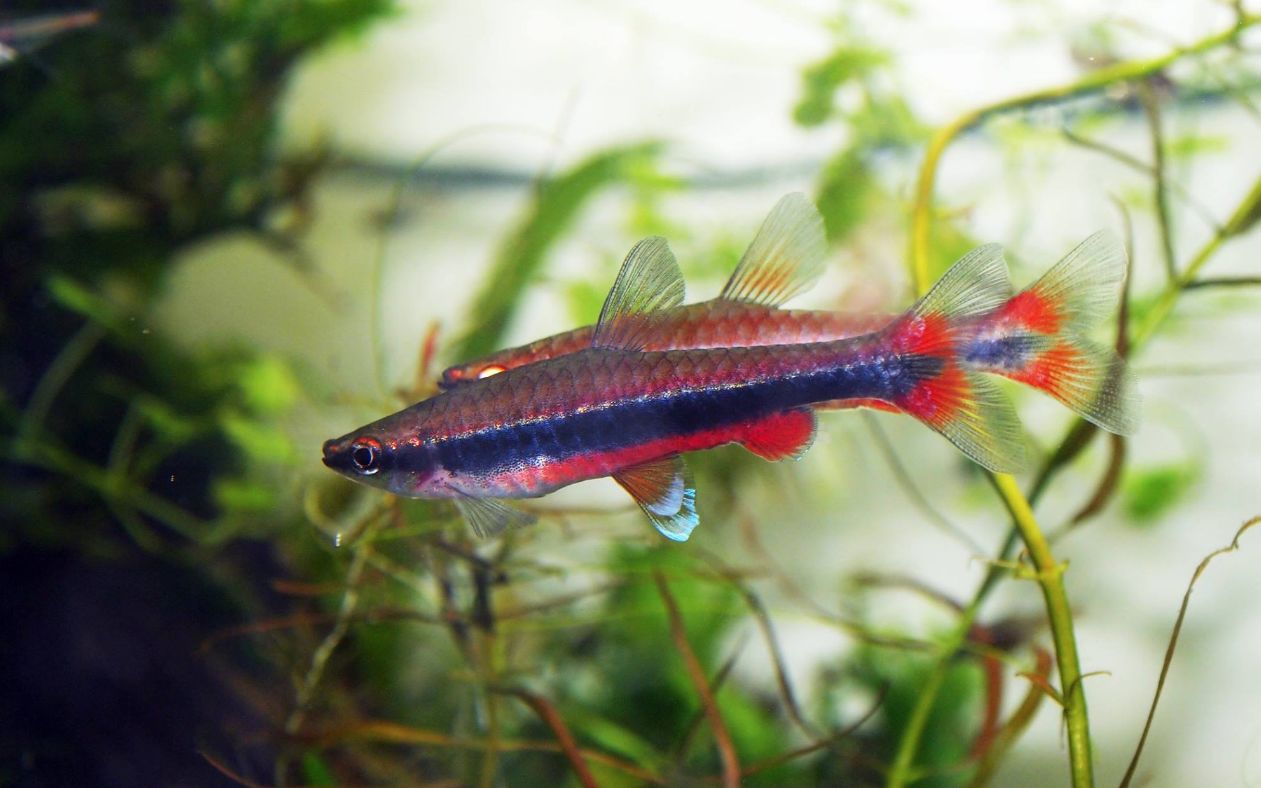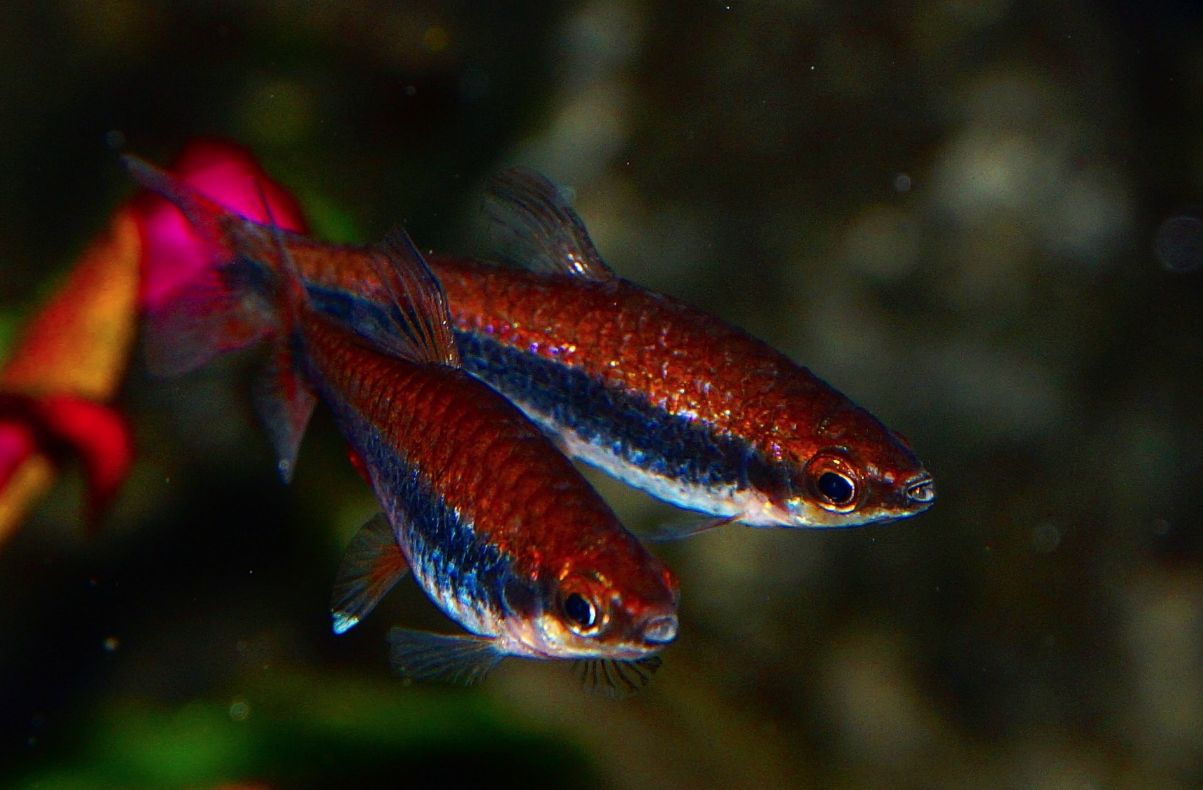Beckford’s pencilfish (Nannostomus beckfordi) is a charming and diminutive species native to the waterways of South America. Known for its tranquil demeanor and striking appearance, this pencilfish is a popular choice for community aquariums. Beckford’s pencilfish thrives in a peaceful environment and can coexist harmoniously with other small, non-aggressive fish.
In this article, you’ll find essential information on how to properly care for Beckford’s pencilfish, including their dietary needs and optimal tank mates. Discover tips for creating the ideal habitat to keep your fish healthy and happy.

Contents
Habitat in the wild
Beckford’s pencilfish (Nannostomus beckfordi) is a fascinating species with a diverse range of habitats across South America. This petite fish can be found in the rivers of Guyana, Surinam, French Guiana, and the Amazon River basin, extending to the eastern regions of Brazil, including Amapá and Pará states.
Additionally, the golden pencilfish, often considered a variant, is found in the Madeira River and throughout the middle and bottom regions of the Amazon River basin, reaching up to the Rio Negro and even the Orinoco River in Venezuela. The appearance of these pencilfish can vary significantly based on their habitat, and some populations were once classified as separate species until recent taxonomic revisions.
In their natural environment, Beckford’s pencilfish thrive in river tributaries, small rivers, and wetlands. They prefer areas with dense vegetation, abundant snags, and a thick layer of fallen leaves covering the bottom. While wild-caught pencilfish are still available, most pencilfish in pet stores are commercially bred to ensure a sustainable supply.

Description
The Nannostomus genus belongs to the Lebiasinidae family and is closely related to members of the Characinidae family. Beckford’s pencilfish (Nannostomus beckfordi) was first described by Günther in 1872. The genus Nannostomus comprises over 15 species, many of which are endemic to specific regions.
A notable feature shared by all species in this genus is a distinct black or brown horizontal stripe running along their bodies. However, Nannostomus espei stands out as an exception, displaying five large spots instead of a stripe.
Beckford’s pencilfish typically grows to about 2 inches (5 centimeters) in length, though some sources report a maximum length of up to 6.5 centimeters. This size is representative of most adults, though individual fish may vary slightly in size. When caring for Beckford’s pencilfish, it’s important to consider their small size, ensuring that the tank environment, tank mates, and food are appropriately suited to their needs.
The lifespan of Beckford’s pencilfish is relatively short, averaging around 3 years, with a maximum of up to 5 years.
These fish have an elongated, slender body that resembles a pencil. Males are more vibrant, featuring a striking red or orange stripe running from the head to the tail. In contrast, females are less colorful and lack this vivid stripe.
| Characteristic | Description |
|---|---|
| Common Name | Beckford’s pencilfish, golden pencilfish |
| Scientific Name | Nannostomus beckfordi |
| Origin | South America (Guyana, Suriname, French Guiana) |
| Size | Up to 2 inches (5 cm) |
| Body Shape | Elongated and slender |
| Coloration | Males: Bright red or orange stripe; Females: Paler coloration, lack stripe |
| Temperament | Peaceful and non-aggressive |
| Tank Size | 10 gallons or larger |
| Water Temperature | 72-82°F (22-28°C) |
| pH Range | Slightly acidic to neutral (around 6.0-7.0) |
| Water Hardness | Soft to moderately hard |
| Tank Setup | Well-planted with hiding spots |
| Lighting | Subdued lighting preferred |
| Diet | Omnivorous; accepts flake, pellets, live, and frozen foods |
| Compatibility | Peaceful community fish; avoid larger, aggressive species |
| Breeding Difficulty | Moderate |
| Breeding Behavior | Courtship dance between male and female; adhesive eggs attached to surfaces |
| Lifespan | 3-5 years (approximate) |
Difficulties in keeping
This isn’t a large fish, so it can’t be kept is a small tank. Beckford’s pencilfish is not very demanding, but it requires some experience to keep it successfully in a tank. Thus, the fish can’t be recommended for beginner aquarists, although I can’t say that this is a very challenging fish species to keep.

Care and keeping in a tank
Beckford’s pencilfish thrive in a well-planted aquarium that offers ample hiding spots and subdued lighting. They prefer clean, well-maintained water and generally swim near the water’s surface or in the middle layers. Floating plants, such as water lettuce, provide a sense of security and comfort for these fish.
For tank plants, consider adding Vallisneria, such as Vallisneria gigantea or common Vallisneria. The dense foliage of these plants offers protection and potential spawning sites for the fish. However, ensure there is enough open swimming space in the tank as well.
Regarding the substrate, Beckford’s pencilfish are not particularly fussy, but a black background can enhance their coloring and highlight their beauty.
Optimal water parameters for Beckford’s pencilfish include a temperature range of 72-78 °F (22-26 °C), a pH level between 5.0 and 8.0, and a water hardness of 5-20 dGH. They are adaptable and can tolerate a range of water conditions, though maintaining stable parameters is beneficial.
To keep the tank environment healthy, perform weekly water changes of up to 15%. Beckford’s pencilfish do not prefer strong water currents, so gentle filtration is ideal. Additionally, cover the tank with a lid, as these fish are known to jump.
Diet
Beckford’s pencilfish are omnivorous with adaptable feeding habits. Due to their small mouths, they require small-grained food. They readily consume dry food, such as pellets or flakes, that remain afloat on the water surface. This is particularly true for fish that have been bred in captivity rather than wild-caught. Commercially available staple foods designed for tropical fish are a convenient option, providing essential nutrients for their well-being.
For live food, Beckford’s pencilfish eagerly accepts brine shrimp, daphnia, fruit flies (drosophila), wiggle-tails, tubifex worms, and small plankton. These live options offer variety and stimulation.
Frozen foods are also an excellent choice, providing a practical alternative to live offerings. Options like bloodworms, daphnia, brine shrimp, and tubifex worms retain much of their nutritional value and are easy to store in the freezer for convenience.

Tank mates
The Beckford pencilfish is calm and peaceful and can coexist with a variety of small, non-aggressive fish species.
- Tetras: Small tetra species like neon tetras, ember tetras, or glowlight tetras can make good tank mates for Beckford’s pencilfish. They share similar water parameters and peaceful nature.
- Rasboras: Species like harlequin rasboras or phoenix rasboras are compatible with fish. They are peaceful, active swimmers, and add vibrant color to the aquarium.
- Corydoras catfish: Peaceful bottom-dwelling catfish like various Corydoras species (e.g., panda corydoras) can be suitable tank mates. They help keep the bottom of the tank clean and are generally compatible.
- Dwarf Gouramis: Dwarf gouramis are peaceful and colorful fish that can coexist with Beckford’s pencilfish. Ensure you have ample space and hiding spots to prevent any territorial issues.
- Guppies and Endlers: These small livebearers are compatible with pencilfish. They come in various colors and add movement to the aquarium. Ensure the guppies are not overly flashy, as they may attract aggression from the fish.
- Small Loricariid Catfish: Certain small species of plecos, such as the bristlenose pleco (Ancistrus sp.), can work well as tank mates. They help with algae control and are generally peaceful.
Because of its size you shouldn’t keep fish together with large, aggressive and predator fish species. Even just too active fish species like tiger barb, for example, won’t do as tank mates as well.
The fish gets along well with dwarf cichlids, for example, with Apistogramma ramirezi. This kind of fish doesn’t swim in upper water layers while Beckford’s pencilfish doesn’t eat its juveniles. Rasboras and various small sized characines can be considered as good tank mates for the fish.
When buying fishes get 10 species and more. Since, the more species are in the school, the more interesting is to observe their behavior, the brighter is their coloring and their intraspecific aggression inside the school decreases as well.
Gender differences: male vs female
Males of Beckford’s pencilfish exhibit more vibrant coloring, particularly during the spawning period, which enhances their visual appeal. In contrast, females have a distinctly rounded abdomen, which is more pronounced compared to their male counterparts.